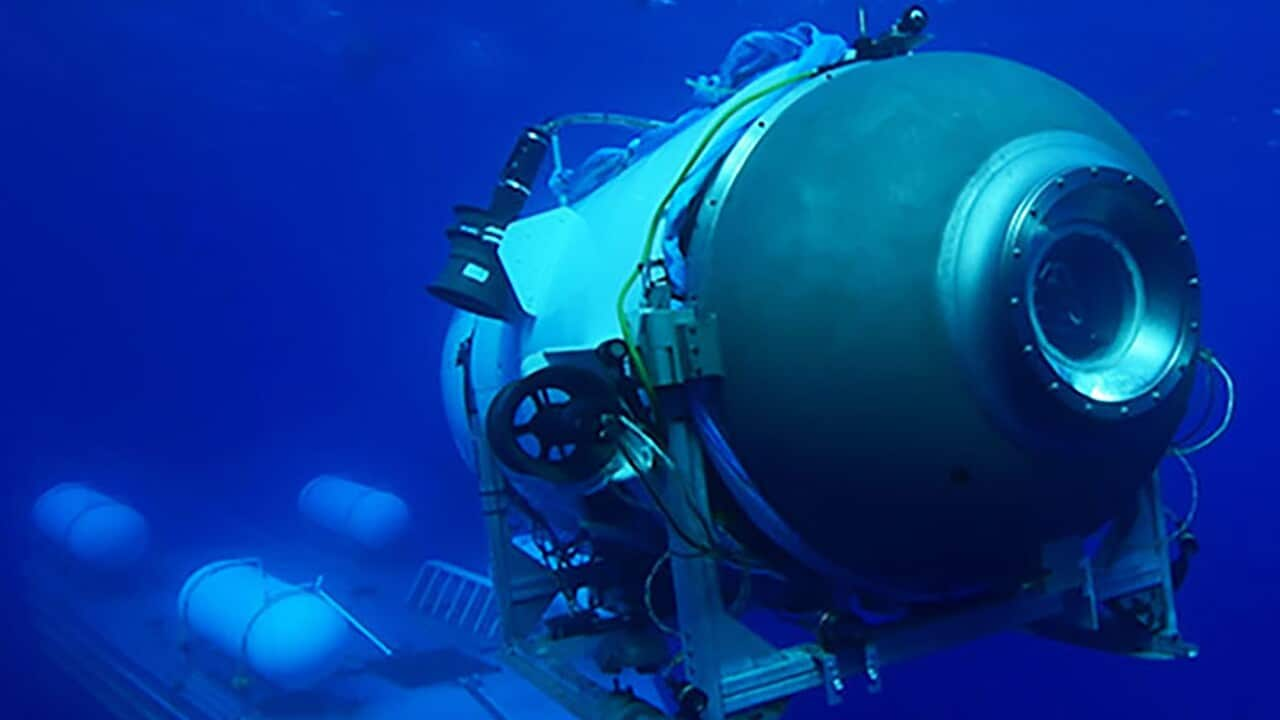Key Points
- An unmanned deep-sea robot has located pieces of the missing Titan submersible.
- The wreckage was about 488m from the bow of the Titanic, 4km below the ocean's surface.
- Authorities say all five people onboard are dead.
The five people aboard a missing submersible died in what appears to have been a "catastrophic implosion," a US coast guard official says, bringing a grim end to that was lost during a voyage to the Titanic.
"These men were true explorers who shared a distinct spirit of adventure, and a deep passion for exploring and protecting the world's oceans," OceanGate Expeditions, the US-based company that operated the Titan submersible, said in a statement.
"Our hearts are with these five souls and every member of their families during this tragic time."
An unmanned deep-sea robot deployed from a Canadian ship discovered the wreckage of the Titan on Thursday morning about 488 metres from the bow of the century-old wreck, 4km below the surface, US coast guard Rear Admiral John Mauger said at a press conference.
"The debris field here is consistent with a catastrophic implosion of the vehicle," he said.
included the British billionaire and explorer Hamish Harding, 58; Pakistani-born business magnate Shahzada Dawood, 48, and his 19-year-old son, Suleman, both British citizens; French oceanographer and Titanic expert Paul-Henri Nargeolet, 77, who had visited the wreck dozens of times; and Stockton Rush, the US founder and chief executive of OceanGate, who was piloting the submersible.
Rescue teams from several countries had spent days searching thousands of square miles of open seas with planes and ships for any sign of the 6.7-metre Titan.
The submersible lost contact on Sunday morning with its support ship about an hour and 45 minutes into what should have been a two-hour descent.

Credit: SBS News
The detection of undersea noises on Tuesday and Wednesday using sonar buoys dropped from Canadian aircraft had temporarily offered hope that the people on board the submersible were alive and trying to communicate by banging on the hull.
But officials had warned that analysis of the sound was inconclusive and that the noises might not have emanated from the Titan at all.
"There doesn't appear to be any relation between the noises and the location of the debris field on the sea floor," Mr Mauger said on Thursday.
The search had grown increasingly desperate on Thursday, when the estimated 96-hour air supply was expected to run out if the Titan were still intact.
The Titanic, which sank in 1912 on its maiden voyage after hitting an iceberg, killing more than 1500 people, lies about 1450km east of Cape Cod, Massachusetts, and 640km south of St John's, Newfoundland.
The expedition to the wreck, which OceanGate has been operating since 2021, cost $US250,000 ($368,000) per person, according to its website.
Questions about Titan's safety were raised in 2018 during a symposium of submersible industry experts and in a lawsuit by OceanGate's former head of marine operations, which was settled later that year.
On Thursday, the deployment of two specialised deep-sea unmanned vehicles expanded the effort to the ocean's depths, where immense pressure and pitch-black darkness had promised to complicate any rescue mission.










